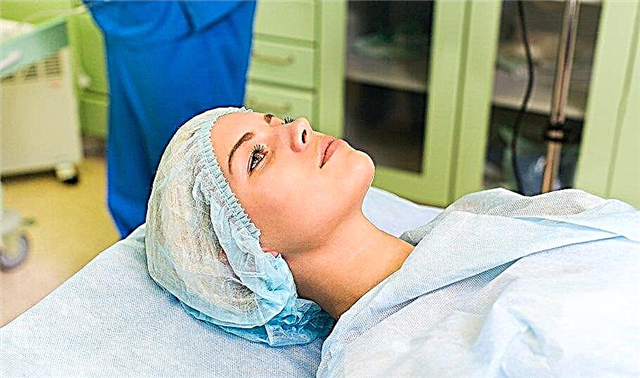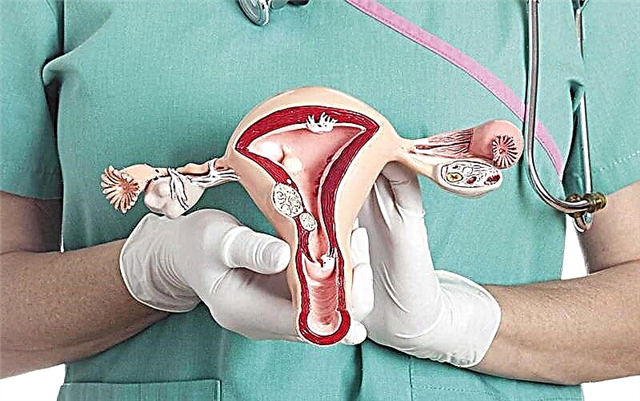A newborn baby or newborn baby, after the birth of the first year, experiences a series of stresses associated with changes in the body. The most difficult period is when the baby's teeth begin to cut. Usually, parents look forward to this moment, not always knowing how long and difficult it can sometimes be. It is rare that the baby easily tolerates this process. Most often, it is associated with a number of unpleasant consequences for the baby. Moms and dads begin to worry, suspecting a virus or a cold in the child, and treat the baby. In order not to make mistakes, you need to know about all the signs that indicate the appearance of the first tooth in the baby.

Baby's first long-awaited tooth
Symptoms of Teething in Babies
The first milk tooth appears in a baby most often at 6-8 months. There are exceptions when teeth are cut earlier or later than this period. Based on the parents' opinion, only 10% of babies easily survive this period. Teething and tooth growth are usually accompanied by a variety of major and minor symptoms.
The main features include:
- sleep disturbance and restless behavior;
- swelling of the gums at the site of teething;
- copious saliva production;
- the baby's desire to gnaw or bite something;
- slight increase in temperature;
- tearing and redness of the eyes;
- runny nose and cough;
- refusal to eat;
- diarrhea (rarely)
In addition, with the main symptoms, there may be irritation and a rash on the chin (from saliva and objects that the baby is trying to chew). In addition, a large amount of saliva entering the nasopharynx is often accompanied by vomiting. Continuous cleaning and rinsing of the nose can cause allergies or irritation of the nasopharynx. Refusal to eat in infants is associated with inflammation of the gums and accompanying painful sensations.

Runny nose in infants during teething
Snot when teething
Doctors believe that the appearance of snot in infants during teething is associated with the physiological structure and proximity of the oral and nasal parts of the skull. With inflammation of the gums, a lot of saliva accumulates in the oral cavity, they enter the nasal passage, causing a runny nose. The secretion of mucus in the nose is facilitated by active blood circulation in the inflamed gums. This can also cause "dental" rhinitis.
There is another version that explains the appearance of a runny nose from teeth in babies. When teeth are formed in a child's body, it requires increased immunity. Not always the baby can cope with such a load, as a result, a response appears in the form of rhinitis, allergies, irritations in the oral and nasal cavity. In addition, at six months, the mother starts feeding the baby with milk mixtures or vegetable and fruit purees. Accordingly, a weakened child's body begins to receive less breast milk together with protective antibodies. This is another reason for the decrease in immunity.
Important! With a weakened immune system, the baby is at risk of infection. During this period, increased attention to the well-being of the child and a quick response to any deviations from the norm are necessary.

Crying and whims of a child when teething
Differences between a "dental" rhinitis and an infected one
To distinguish a child's snot from teeth from a runny nose during an infection, you need to know three points:
- During the appearance of teeth, the snot is transparent, watery, and with infection - thick, green.
- A "dental" runny nose can last up to a maximum of 5 days, and an infected person continues until the end of treatment for a cold or ARVI.
- If the body temperature exceeds 38 degrees and is accompanied by a strong cough and profuse discharge of thick snot, then this indicates a viral infection. A slight increase in temperature caused by teething is usually accompanied by a rapidly resolving rhinitis.
On a note. With an increase in coughing, prolonged heat and a change in the appearance of snot during the appearance of teeth, it is imperative to consult a doctor, and not try to cure the baby with home remedies.

Prolonged rhinitis in a baby is a sign of infection
Duration of "dental" rhinitis in a child
A runny nose in infants during teething is usually short-lived. It all depends on the number of teeth that should appear. A runny nose in such a situation appears not because of a "caught" virus, but because of the general circulation of the mouth and nose. When a swollen gum becomes inflamed, blood begins to circulate actively in it. The same process is activated in the nasal mucosa, as a result, an increase in mucus secretion begins in the nose, i.e. snot. They will run for as many days as the process of tooth appearance lasts, most often no more than three to five. If a baby begins to cut several teeth one after another, you cannot do without the help of a doctor. When contacting a pediatrician, the baby will be examined. Parents will be able to clarify the diagnosis: is there a viral infection. If the doctor confirms its absence, then they will receive advice and recommendations on how best to help the baby, with what means to relieve pain and clean the baby's nose.
Advice to mom. The baby's nasal passages during this period must be rinsed and cleaned to avoid the formation of dried crusts. This will help keep him breathing free. The procedure must be carried out carefully and calmly, so as not to frighten the baby and not harm him.

The procedure for washing the nose is unpleasant for the baby
Advice for parents from Dr. Komarovsky
Evgeny Olegovich Komarovsky, a well-known children's doctor, supporting the theory of the anatomical cause of the common cold during teething in babies, believes that the symptoms listed above need to be treated, especially since both folk and traditional medicine offers many methods.
Dr. Komarovsky's advice to moms and dads is as follows:
- finding a baby in a room at a temperature of +23 and a humidity of 50%;
- regularly rinse the nose of the baby;
- remove excess mucus from the sinuses;
- to treat protracted rhinitis with medication (as recommended by a doctor);
- use homeopathic medicines.
Evgeny Olegovich recommends using sea water or saline solution for 10 minutes to cleanse the nasal passages. After washing, remove the remnants of mucous accumulations with a nasal aspirator.
Only after six days, if the runny nose persists, the doctor recommends that you definitely seek the advice of a doctor. He will prescribe drops, constricting vessels, cooked in herbs. These can be preparations from eucalyptus, oil based on fir extract, which should be smeared in the throat. Inflammation of the gums, pain and itching in the mouth will help remove honey. It can be used in the absence of allergy to the product, no more than a week.
In that case (advises Dr. Komarovsky), if a decrease in immunity "allowed" the infection to enter the infant's body and cause concomitant ARVI inflammation in the throat, severe cough and prolonged snot, it is worth, without delay, call an ambulance at home or go to an appointment to the doctor.

Girl with ARVI
Quite often, young mothers and fathers are at a loss at the sight of a crying child. If they saw that the baby's eyes are watering and running from the nose, they attribute everything to a cold and try their best to do everything possible to alleviate his "dental" suffering. This article should help parents understand why a child has a runny nose on his teeth, and how to distinguish infectious rhinitis from "dental", how to deal with a baby in a similar situation, if the causes of tears are not clear, what medicine and when can be used for treatment during teething teeth.



